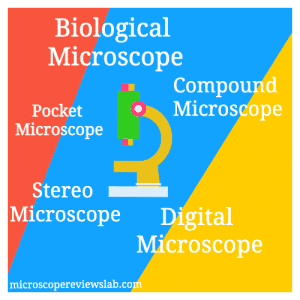If you are a first-timer looking to buy a microscope, you may be extremely overwhelmed by the many types of microscopes on the market.
 These days, microscopes are classified according to their applications, functionalities, portabilities and many others.
These days, microscopes are classified according to their applications, functionalities, portabilities and many others.
For example, a light or optical microscope can be easily understood as having a microscope with lighting. Illumination helps enhance the magnification and clarity of tiny objects and specimens.
We hope that such simplistic categorization of microscopes makes it easier and quicker for you to identify the right types of microscopes in accordance with your preferences and needs.
The key is to help you better pinpoint the type of microscope you should get for personal or professional use.
If you are new to microscopes, besides reading our shopping guide for microscopes, it is highly recommended to check out the many varieties of microscopes listed below as well as their intended use.
Microscope Types | Applications are not limited to what’s listed below |
| Compound microscope – allows you to check out very tiny objects that cannot be seen by our naked eye. |
|
| Stereo microscope – allows you to examine a specimen from a three-dimensional viewpoint. |
|
| Digital microscope – used for capturing images and recording video using digital software that supports various microscope functions. |
|
| Monocular microscope – typically use for providing two-dimensional (flat and without depth) observation of objects |
|
| Binocular microscope – allows you to view an object at the same time via two eyepieces. Binocular microscopes come in two basic types, namely stereo and compound – each of them has different applications. |
|
| Trinocular microscope – is basically a binocular microscope with an additional port or interface for image and video recording. |
|
| Optical microscope – also known as a light microscope, magnifies small specimens using both visible light sources and lenses. |
|
| Pocket microscope – similar to a handheld microscope, are compact in size and highly portable, suitable for both indoor and outdoor usage. |
|
| USB microscope – is a compact type of digital microscope with a macro lens that connects to a computer via USB port. Usually comes with a built-in webcam and LED light. |
|
| Biological microscope – typically used for observation of tiny organisms, and cells among other microscopic life-forms. |
|
| Polarizing microscope – also known as a petrographic microscope, allows you to examine birefringent materials or anisotropic objects that possess a certain amount of refracting differences. |
|
| Metallurgical microscope – allows you to visualize and observe glossy and metallic surfaces, can be used for inspection of product defects, etc. |
|
| Fluorescence microscope – allows one to study the intricate properties of organic and inorganic substances through the use of fluorescence. |
|
| Confocal microscope – allows collection of high-resolution multispectral images by producing a point source of light and rejecting out-of-focus light. |
|
| Dissecting microscope – allows you to observe three-dimensional specimens under high magnification. |
|
| Darkfield microscope – simply put, it allows you to visualize a specimen’s contrast that cannot be seen under normal lighting. |
|
| Brightfield microscope – similar to a compound light microscope, allows you to observe and study stationary or live specimens that are naturally pigmented or artificially stained. |
|
| Inverted microscope – allows you to better study the living cells at the bottom of a transparent vessel since the objectives and turret are placed under the stage pointing up. It is the polar opposite of upright microscope. |
|
| Electron microscope – make use of a beam of electrons as a light source which allows the studying of the structural compositions of large molecules, biopsy samples and so on. It is also typically for quality control and failure analysis, etc. |
|
